#MidsizeCars
Midsize Sedan Deathwatch #16: The Decline of the Midsize Class's Middle Class
Ever more minor midsize players continued to see their share of America’s midsize sedan segment dwindle in September 2017. The cause: domination on the part of America’s two major midsize cars.
The all-new 2018 Toyota Camry enjoyed its first full month of meaningful availability in September and produced a 13-percent year-over-year U.S. sales improvement as a result. Meanwhile, Honda is clearing out remaining 2017 Accords in advance of the all-new 2018 Accord’s arrival this fall. Honda’s efforts produced a 10-percent uptick compared with September 2016.
Yet despite the big gains from the two major players, the upper class, the midsize segment still declined 7 percent in September because of sharp declines by many members of the middle class.
That means Camry and Accord market share continues to rise. That means the slice of the market earned by the middle class continues to shrink.
Honda Wanted 2018 Accord to Top Midsize Class in Fuel Economy - It Does No Such Thing
From a historical midsize perspective, the all-new 2018 Honda Accord is rather thrifty with the Earth’s decreasing supply of oil.
It’s fuel efficient, in other words. Over the span of 10,000 highway miles, the basic 2018 Honda Accord is expected to consume 263 gallons of regular octane gasoline. That’s only 13 more gallons than you’ll consume in a 2018 Honda Civic Hatchback with the same 1.5-liter turbocharged four-cylinder. It’s 15 fewer gallons than you’d have used in the most efficient non-hybrid 2017 Honda Accord.
The city improvement is more meaningful. The 2017 Honda Accord four-cylinder topped out at 27 mpg in the city, equal to $944 for 10,000 miles at the current fuel price of $2.55/gallon. The new 30-mpg Accord reduces city consumption in the same scenario to $850, a 10-percent decrease.
The 2018 Honda Accord is not, however, the most fuel-efficient car in America’s midsize sedan category. Honda thought it would be. Honda was wrong.
2018 Nissan Altima Prices Rise Slightly as Nissan Adds Equipment, Prepares a 2019 Challenger for Camry and Accord
Bolstered in its fight against all-new editions of key rivals from Toyota and Honda with the standard fitment of automatic emergency braking and forward collision warning, the 2018 Nissan Altima’s price rises by only $240 compared with the outgoing model.
The base 2018 Nissan Altima 2.5 S rises a few ticks above $24K to $24,025, including destination and handling charges. The Altima continues with a 179-horsepower 2.5-liter four-cylinder linked to a continuously variable transmission.
Given the era in which we live, it’s not surprising to see a more significant price increase for the lone remaining V6 model — the sportier 3.5 SR is dead.
That Powerful New Four-Cylinder 2018 Toyota Camry? It's Not That Quick
Your excitement knows just cause. Upon reporting that the 2018 Toyota Camry would feature the American midsize segment’s most powerful base engine, the masses descended. We could see the hair standing up on the back of your neck through the series of tubes that is the internet.
In the 2018 Toyota Camry L, LE, SE, and XLE trims, the Camry’s new 2.5-liter four-cylinder produces 203 horsepower and 184 lb-ft of torque, at 6,600 and 5,000 rpm, respectively. In the 2018 Toyota Camry XSE, however, the Dynamic Force 2.5-liter produces — wait for it — 206 horsepower and 186 lb-ft of torque, gains of three ponies and two lb-ft.
So what do those major power gains, up from 178 horses and 170 lb-ft in the 2017 Camry, get the owner of the new 2018 Toyota Camry?
Midsize Sedan Deathwatch #15: Toyota Camry Proves to Be a Killer In August 2017
The launch of the all-new 2018 Toyota Camry began in July 2017 and delivered a big boost to America’s best-selling midsize car in August 2017.
As its competitors combined for a 12-percent loss valued at nearly 16,000 fewer sales than in August 2016, Toyota Camry sales jumped 13 percent, a gain of 4,187 sales. That figure includes 6,805 new-gen Camrys imported from Japan, where the Camry’s home market factory is being relied upon while Toyota’s Georgetown, Kentucky, assembly plant gathers steam for the entirely different Toyota New Global Architecture.
With falling sales across much of the category and rising volume at the top seller, Toyota got exactly what it called for in August 2017: a huge market share increase. But did the Camry provide the rumored boost to the segment overall? Quite clearly no, not yet.
QOTD: Camry, Camry, on the Wall, Which Is the Greatest Toyota Camry of Them All?
The launch of the 2018 Toyota Camry in July 2017 marked the arrival of America’s eighth Camry. Near the end of Ronald Reagan’s first term, the first Camry — not the first Camry, but the first Camry available for U.S. consumption — was launched in front-wheel-drive sedan and hatchback formats.
By 1997, the Camry was America’s best-selling car — a title it has held in each of the last 15 years.
The second-generation Camry spawned a V6 powerplant, available all-wheel drive, and a hatchback-replacing wagon. The third-generation Camry kept the sedan and wagon, dropped the AWD, added a coupe, and was built in America. The fourth iteration of the Camry, 1997-2001, dropped the wagon and began to be seen as the automatic choice for America’s midsize sedan buyers. The fifth Camry, which ran from 2002-2006, was sturdy enough to be form the foundation for two more Camry generations. The sixth Camry was the first to be available as a hybrid, but it put an end to the coupe, which in the prior two generations was known as Camry Solara. The seventh Camry, 2012-2017, sometimes hailed as the most American-made of all cars, benefited from a thorough refresh for 2015. The eighth Camry, at dealers now, represents much more than a major overhaul, with significant increases in fuel economy standing out as a leading improvement.
But which Toyota Camry is best of all?
Don't Be so Quick to Pull the Trigger on That 2018 Toyota Camry - 2017s Are Cheap and Abundant
The 2018 Toyota Camry is the first truly, completely, all-new Toyota Camry since 2002. Built on Toyota’s New Global Architecture, it’s stiffer, safer, and by all accounts, substantially better to drive than the 2017.
Fuel efficiency took a leap forward. Horsepower did, too. The feature count, including the safety department, was elevated. The 2018 Toyota Camry even has a sense of style, whether you like its sense or prefer less offensive past examples.
With an all-new architecture for an in-demand car — yes, even as sedans slow, the Camry is still the 15-time best-selling car in America — comes a lack of willingness on the part of Toyota to deal. That’s made all the more true by the current cost of importing Camrys. While production will eventually be in full swing at the Camry’s Georgetown, Kentucky, assembly plant, early copies of the 2018 Camry hail from Japan.
Rare will be the buyer who heads into a U.S. Toyota store this Labor Day weekend with a strong preference for the old Camry, still available in abundance on dealer lots. Even with concerns (albeit modest concerns; this is a Camry) regarding first-model-year reliability, the MY2018 Camry is the bright and shiny object.
The 2018 Toyota Camry is better than the 2017 Toyota Camry: objectively, subjectively, on paper, on the road. But is it 41-percent better?
QOTD: Does Any Car Do a Better (or Worse) Job of Looking Good and Bad Than the Chevrolet Malibu?
Sometimes the little things make a big difference. Body color door handles, for example, can take a simple compact car from appearing fit for penalty box duty to appearing worthy of driveway placement. Swap those black side mouldings and matte black mirror housings for body color paint and you’re home free.
In other instances, the absence of foglights in foglight housings turns a decent front fascia into a disappointment. A bigger front air dam has the potential to suggest the addition of horsepower. Chrome window surrounds, upgraded lighting, metallic paint, and red-trimmed grilles can add a premium aura to otherwise pitiful products.
Oh, and don’t forget the wheels. Wheels can cover a multitude of design errors.
But does any car benefit more from big, stylish wheels; body colour mirrors; and LED daytime running lights than the 2017 Chevrolet Malibu? And does any car suffer more from small wheels with puffy tires, black mirrors, and stock lighting than the 2017 Chevrolet Malibu?
All of the New 2018 Toyota Camrys Sold in America in July Were Japan Imports
We learned early in July that many of the early 2018 Toyota Camrys available in Toyota’s U.S. showrooms wouldn’t be built in Toyota’s Georgetown, Kentucky, assembly plant.
Through June, not a single one of the 2016 and 2017 Camrys sold in America were imported. But all of the 2018 Toyota Camrys sold in July came across the Pacific from Japan.
Granted, most of the Camrys leaving Toyota showrooms are still old new Camrys, not new new Camrys.
Midsize Sedan Deathwatch #14: July 2017 Sales Plunge by a Fifth, Everybody Falls Except the Dodge Avenger
Every midsize car on sale in the United States reported declining year-over-year volume in July 2017. Every car except the Dodge Avenger, which came back from the dead with 10 reported sales after a nine-month hiatus. 2014 was the Avenger’s last model year.
But forget that sales stat quirk — Pentastar Avenger Blacktop Edition, be still my soul. Every other midsize nameplate generated fewer sales in July 2017 than July 2016, with losses piling up fastest at Ford and Hyundai, with the Fusion and Sonata, respectively.
Between major Fusion and Sonata losses and decreased volume everywhere else, U.S. midsize car volume fell by a fifth in July 2017 — a 36,000-unit decline.
Hyundai Acknowledges Seventh-Generation 2015-2017 Sonata "Didn't Turn Heads"
After the forgotten third-generation car, the odd and bulbous fourth-generation car, and the dull fifth-generation car, the sixth Hyundai Sonata was unveiled at the 2009 Los Angeles Auto Show. It was surprising, even shocking, that Hyundai so dramatically transformed its staid midsize car into a radical “fluidic sculpture” sedan.
In the United States, after averaging 132,000 sales over the previous half-decade, the Hyundai Sonata exploded. By 2012, Hyundai sold more than 230,000 copies, and the Sonata averaged 215,000 U.S. sales between 2010 and 2014, a 63-percent increase compared with the previous half-decade average.
The momentum was not sustained. The seventh-generation Hyundai Sonata debuted in the United States at 2014’s New York International Auto Show. Where did the fun go? Where was the drama, the cat-like headlamps, the desire to stand out from the pack?
“We went from a very striking design, to a very beautiful car, but it just didn’t turn heads like the car before it did,” Hyundai Motor America’s vice president of product planning, Mike O’Brien, tells Automotive News.
2018 Honda Accord Designer: "Accord Is an American Car"
The 2018 Honda Accord will be assembled in Marysville, Ohio. The overwhelming majority of its sales will occur in the United States of America. Its dimensions, inside and out, suit the U.S. market. In 2016, the Accord ranked second on Cars.com’s American-Made Index.
Open its trunk and a family of bald eagles fly out, having successfully incubated apple pies, having binge-watched every season of Keeping Up With The Kardashians. There’s a subtle Statue of Liberty easter egg on the windshield, Hollywood signs engraved in its cupholders, and a 3D hologram of Mount Rushmore featuring a fifth character — Soichiro Honda — that emerges from the glovebox if you shift the manual transmission into sixth, say VTEC three times, and spit over your left shoulder.
The Accord, according to lead exterior designer Tetsuji Morikawa, “is an American car.”
To make sure of that, however, Morikawa said the design team, “wanted to feel like Americans.” And they wanted to finish their design of the 10th-generation Accord in the United States, not Japan.
2018 Honda Accord Interior Designers Believe Proximity Makes The Elbows Grow Fonder
The 2018 Honda Accord is not a refresh. It’s not a refurbished, reconditioned revamp.
The 2018 Honda Accord is very much a new car, a 10th-generation follow-up to the five-year, 2013-2017 run of the outgoing Accord. That’s obvious when you look at the design of the new Accord — another midsize car attempting to banish boredom in an attempt to maintain healthy U.S. car sale volumes when more and more people want crossovers. You see it in the 2018 Toyota Camry, the 2018 Hyundai Sonata’s new grille, and the 2018 Accord’s squarer nose and faster roofline.
But Accord buyers will spend far more time inside the car than they do looking at its exterior. For owners, Honda wanted to make the 10th-generation Accord roomier, more capacious, better suited for ferrying five passengers.
So Honda moved the two front passengers closer together.
Five Island Beaches, One 2017 Ford Fusion Energi – Can It Be Done on EV Power Alone?
The planning session was brief. At TTAC’s virtual HQ, also known as TTAC Slack, Steph Willems, Corey Lewis, and Adam Tonge were busy formulating an idea.
Fascinated by the Cain family’s recent move to rural Prince Edward Island, the guys wondered if, on electric power alone, Ford’s plug-in hybrid 2017 Fusion Energi SE could cross Prince Edward Island from the north side’s Gulf of St. Lawrence to the south side’s Northumberland Strait, which separates Prince Edward Island from mainland Canada.
Sure it can, I said, but that’s too easy. There are many narrow parts of Prince Edward Island. Crossing Rte. 308’s nine miles from Naufrage to Rollo Bay wouldn’t be much of a challenge.
Building on that idea, however, we developed a plan that would grant yours truly a midday office reprieve, or so I thought. From the Cain homestead in Margate, just outside the bustling metropolis of Kensington, I would depart with a fully charged 2017 Ford Fusion Energi and attempt to reach five spectacular beaches along the Gulf of St. Lawrence on PEI’s so-called Green Gables Shore.
Google Maps said I would need to travel 22 miles. The 2017 Ford Fusion Energi has 23 miles of pure EV range. This’ll be a breeze, I thought to myself, and I fled my office and TTAC’s virtual HQ minutes later, thoroughly unprepared for what came next.
2018 Hyundai Sonata Will Not Kill the Crossover - Hyundai Keeps Its Hopes Humble
Launched for the 2015 model year, the seventh Hyundai Sonata was not the avant-garde successor to the 2011-2014 Sonata for which many hoped. The new Sonata, while objectively better in virtually every way, was missing a key ingredient.
For 2018, Hyundai has thoroughly refreshed the seventh-generation Sonata, hoping that a far more aggressive front fascia will draw more eyes. Hyundai went much further than the superficial, however, by stiffening the Sonata’s structure, upgrading to an eight-speed automatic, and including more safety equipment as standard fit.
Yet while Toyota and Honda believe their new Camry and new Accord can ignite the midsize sedan segment in a bid to wage war against a crossover onslaught, Hyundai’s goals for the refreshed 2018 Sonata are far more modest. Much more modest. Más modesto.



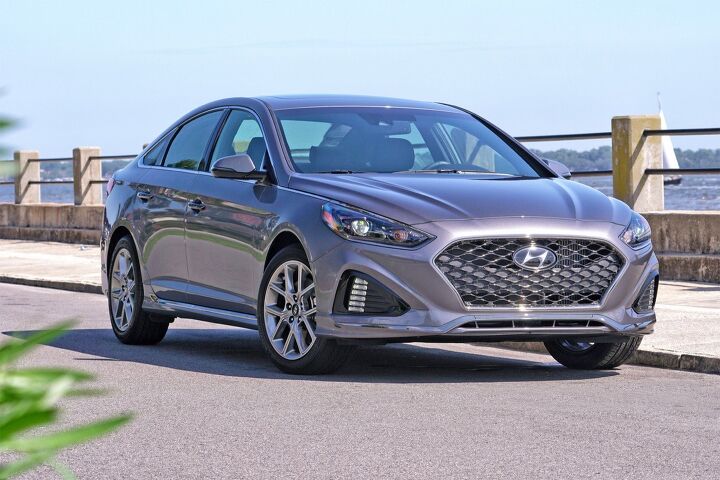
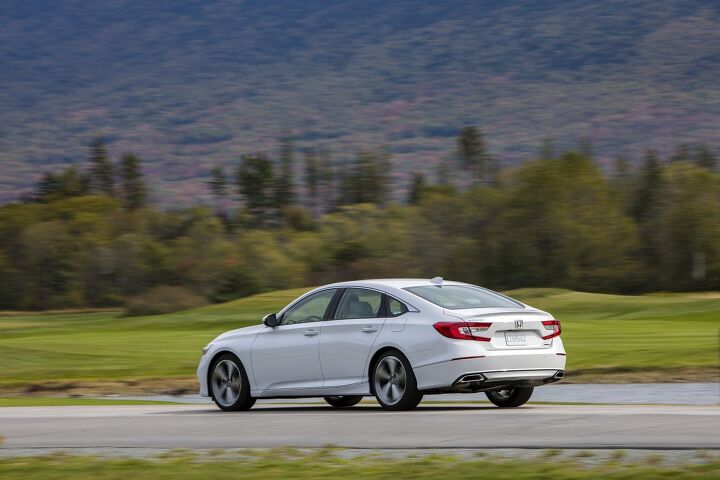
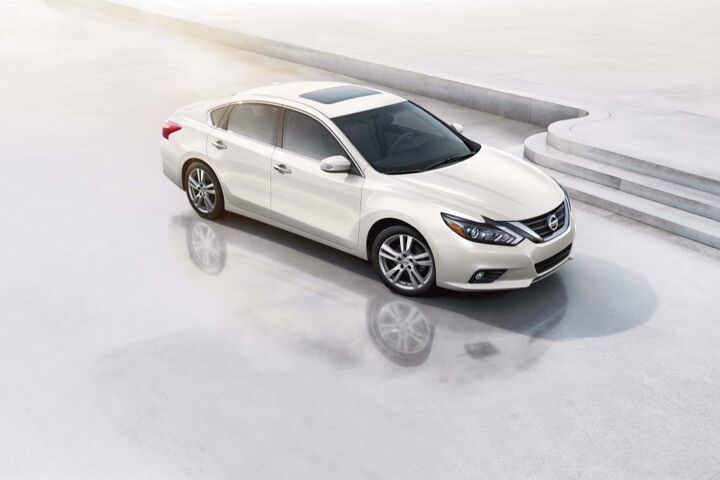





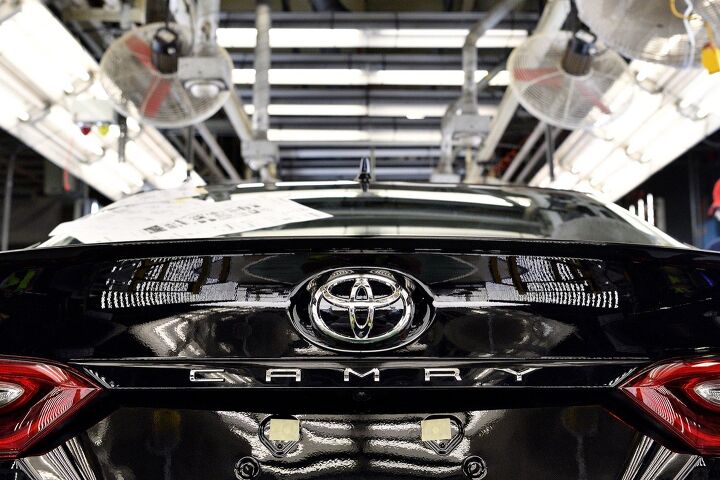


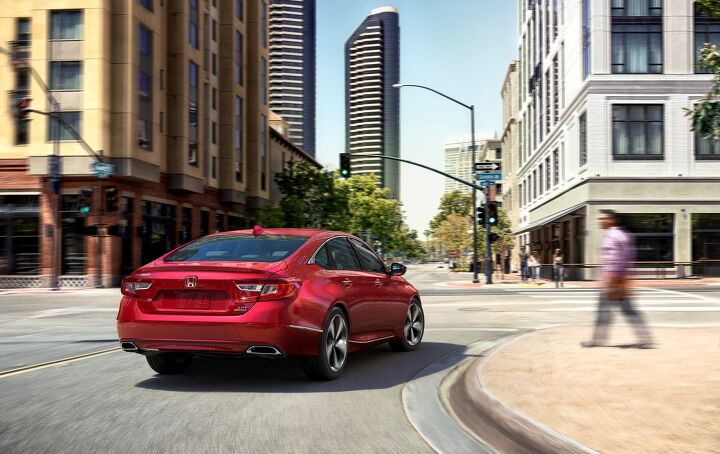
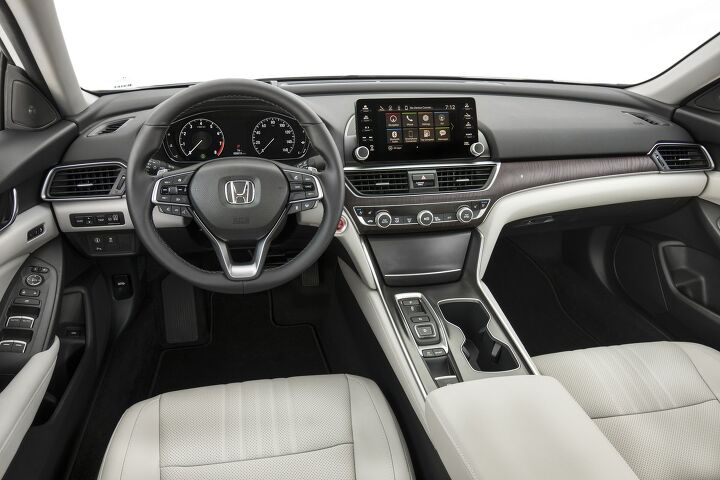














Recent Comments